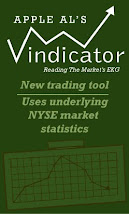Comments by Draghi (President European Central Bank - ECB) and Merkel (President Germany) on Thursday and Friday that the European Union will be defended and supported sparked a sharp rally in world markets, including the ES/SPX. So how do you suppose that will be accomplished? By issuing more Euros, of course. And giving those Euros to the profligate countries that are over their head in debt. Hmm.....
If you or I decide to buy a car and need to borrow money to do it, we make an arrangement with a lender where we sign a promise to pay off the loan over time - that agreement is called a Promissory Note. To anchor that agreement, the lender will use the car as collateral. So the collateral is a TANGIBLE asset - it's a piece of physical property.
It used to be that if a person was a well known and well heeled bank customer he could get what was known as a Signature Note. This was a loan who's collateral was the belief, or trust, that the borrower would repay the loan. In this case the collateral was an INTANGIBLE asset.
Reach into your pocket and pull out a $1 bill. On it you will see printed "Federal Reserve Note". So what does that mean? It means that the money is a promise to pay by the Federal Reserve. In other words, it's a debt instrument. But what kind of note is it? What's the collateral? It used to be that U.S. currency was ostensibly convertible into a fixed amount of gold, so the collateral was a tangible asset - gold. But that was ended in the early '70's (thank you Tricky Dick). So now it's backed by "the full faith and credit of the U.S. government" - i.e. an intangible asset. Everyone who holds the greenback is essentially trusting that the U.S. is good for the debt. But who are we trusting in? Who's ultimately responsible for the promise to pay that our currency represents? In the end, it's politicians. Oh, gee, that eases my mind.
However, an argument can be made that the U.S. is a pretty good bet to be good for a debt. In spite of the economic problems of the recent past we can be viewed as very politically stable in contrast to many other countries around the world, and we are blessed with enormous natural resources and accumulated wealth. And these are good arguments. But a counter-argument can be made that these advantages can be overwhelmed by poor management. Or, more specific to the current situation, poor economic policy on behalf of the Federal government and the Federal Reserve.
Flash back to 2008. The U.S. economy was swallowed by a housing debt bubble. Over the top debt based on extremely overvalued collateral. So how did our esteemed leaders chose to deal with this problem? Well, by attempting to pump up the economy by borrowing money to inject through enormous government spending programs. Also, but not less significant, by printing more money (Federal reserve NOTES) - the term is "expanding the money supply". So we used debt to attempt to solve a problem based on excessive debt. Kind of like fighting a house fire with a flame thrower. Prospects for success are limited, to say the least.
So take all this thinking and apply it to the situation in Europe. It's essentially the same situation as we've been dealing with in the U.S. - a debt bubble which is being addressed by the issuance of more debt. But complicating things is the fact that the European Union is a voluntary association of separate sovereign states. Each of those states is governed by it's own group of politicians who are answerable first and foremost to there own constituents and only (very) secondarily to the EU. Which highlights the critical fault line in the EU arrangement - it's an attempt to unite Europe economically without a political and legal union in place. And their currency, the Euro, is based on the same shaky foundation and is, like the greenback, essentially a debt instrument backed by the intangible asset of trust in the EU's ability and willingness to pay. Yes, certainly the Germans have shown themselves to be worthy of trust in this regard, but how about the Greeks? Or the Spanish, the Italians or even the French? So when Draghi and Merkel say that the EU and the Euro will be supported, can we be sure that their promise will be fulfilled?
In case you haven't guessed it, it's this author's opinion that the world economy is in some very deep do-do, and the hole is being continuously dug deeper. So long term the view of this site is decidedly bearish.
No charts today in this update. The short version of the current analysis is that we are still in a trading range that's been the case for the last couple of months. The ES needs to break decidely above or below the limits of that trading range to establish an intermediate term direction. Interestingly the boundaries are exactly 100 points apart - 1419.75 on the upside and 1319.75 on the low end. For current in depth EW counts click here to go to the chart section of this site.
Sunday, July 29, 2012
blog comments powered by Disqus
Subscribe to:
Post Comments (Atom)
